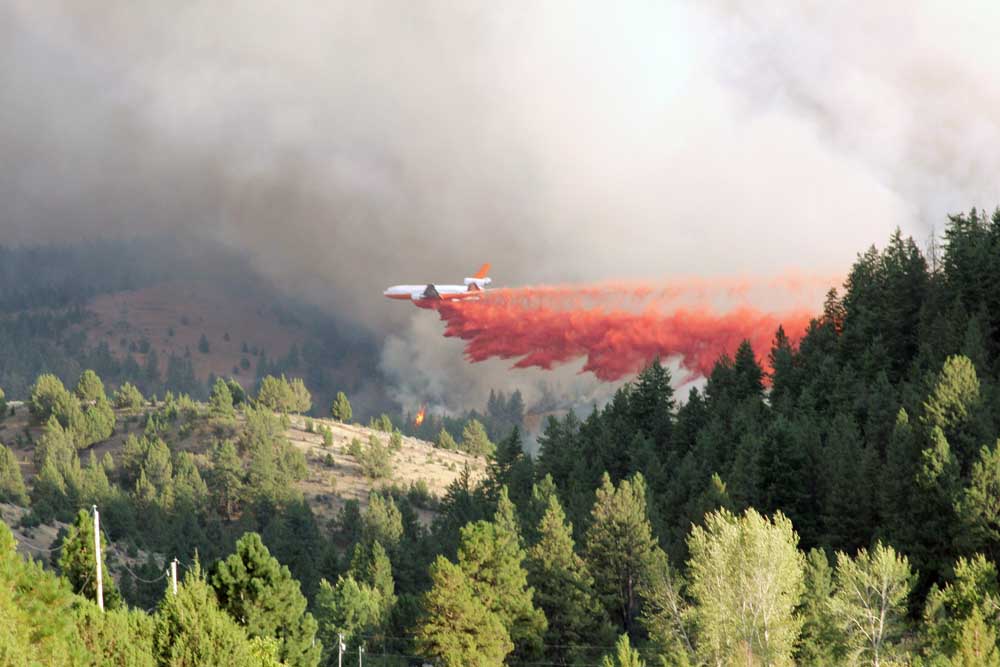Wildfire season will arrive early in much of West
Published 3:29 pm Wednesday, May 5, 2021

- An air tanker drops retardant on a wildfire. Lawmakers are calling for more resources as Oregon heads into another fire season analysts say will again be above average.
Wildfire forecasters say early summer-like conditions in much of the West will likely set the stage for a busy peak season.
Trending
“We have had a pretty dry spring in the Pacific Northwest, especially on the east side, so drought has increased across a good portion of the region,” National Interagency Fire Center meteorologist Nick Nauslar said in an interview. “With that, fuels are drying, and at times we’ve seen fuel conditions more indicative of what you would see in June or July in the last few weeks.”
Drying fuels and expected above-normal temperatures mean central and eastern parts of the Northwest should see a fairly active summer fire season that starts early, he said.
NIFC in its National Significant Wildland Fire Potential Outlook for May through August said climate forecasts indicate conditions that are warmer and drier than normal are likely for much of the Plains and the West into summer.
Trending
“Drought is expected to persist if not worsen and expand across the West and in the northern and southern Plains into summer,” the report said.
The risk of significant fires — those burning more acres than the median number — is above normal in several Western regions.
In much of the Northwest, fuel moisture dropped to unusually low levels but early snowmelt increased access for prescribed burning.
NIFC said significant fire potential is expected to increase to above average in June across central Oregon and into southeast Washington, and continue through August. Above-normal potential for significant fires is expected by August in southwest Oregon.
North-central Idaho and northwest Montana have adequate precipitation thanks to frequent, timely storms and cool weather that helped the area preserve snowpack at middle elevations, the report said.
Northern California and Hawaii have above-normal potential for significant fires from June through August in most mid- and upper-elevation areas, NIFC said.
The fire potential is above normal in southern California in July and August, away from the deserts and the San Joaquin Valley.
In the northern Great Basin, NIFC expects above-normal fire potential to increase by July and August in parts of Idaho and Wyoming.
Despite cold fronts and some precipitation in April, severe to extreme drought continues over much of Nevada and parts of central Idaho, where winter precipitation was lower. Drought likely will persist through spring, with warm and dry weather to return to much of the Great Basin in May.









